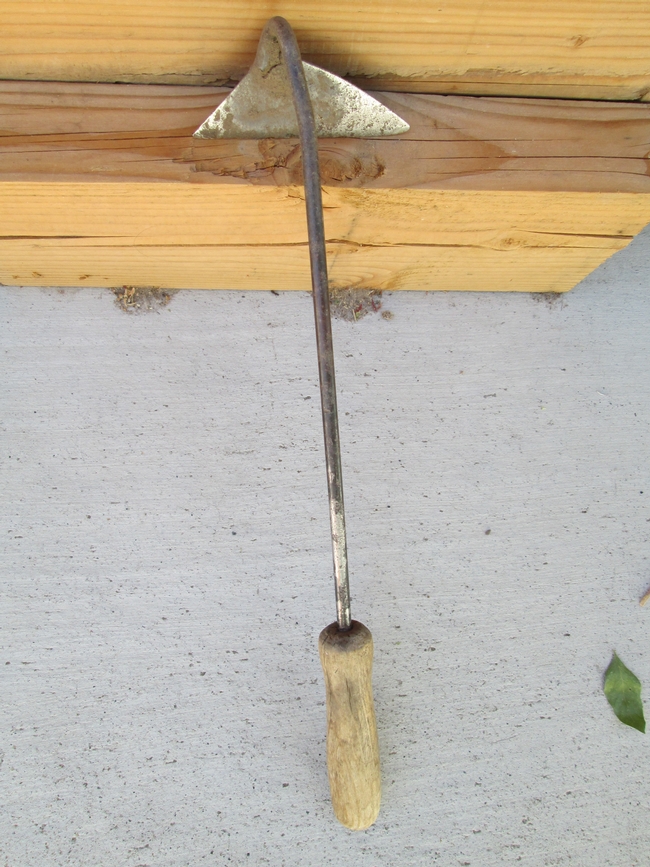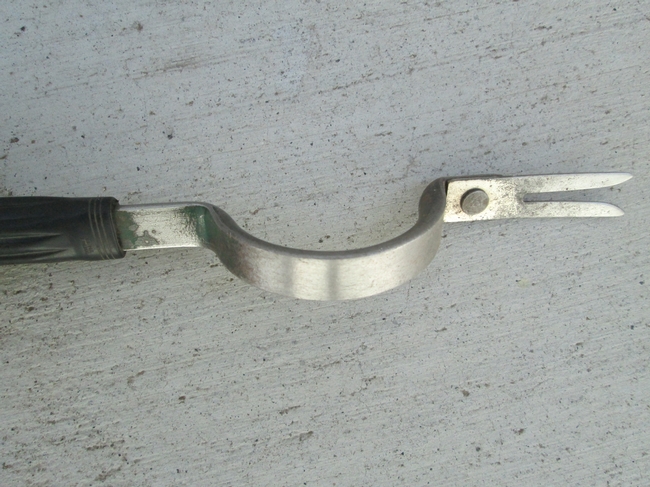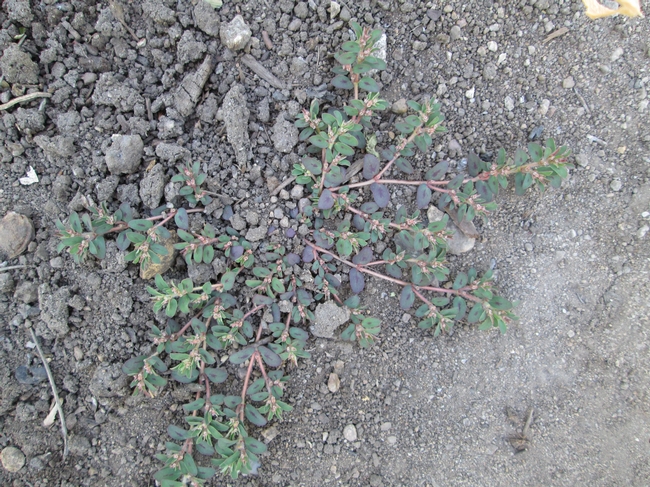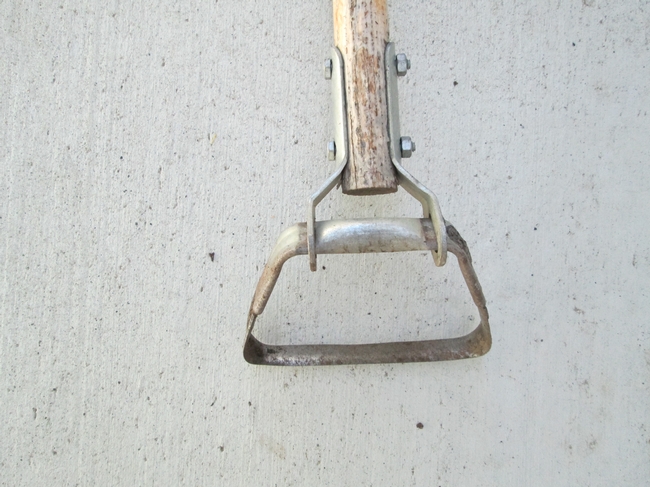Even in the best managed gardens, as soon as the soil warms up weed erupt and need to be controlled before they get the upper hand. Different soils and conditions produce differing unwanted species and it pays to be able to identify them in order to know what is growing in your garden and how to manage them.
It is best to deal with weeds as they germinate and before their roots get a hold, and certainly before they flower and seed or there will be an even worse problem the following year. The most efficient and least labor intensive way is to use a hoe.
I keep a hoe in readiness close to the vegetable plot and use it almost daily during the growing season as soon as I spot an invader. My personal favorite is the Hula hoe which is stirrup shaped with a blade sharpened on both sides so it can be used to cut through young weeds just below soil level on both the push and pull strokes. It is very efficient on cultivated soil so long as the plants are small. It will not work to remove weeds from turf, neither will it cope with thick clumps of established Bermuda grass or any woody plant that has a thickened base. It is not wise to hoe plants that increase by rhizomes such as nut sedge or bindweed since the hoe is liable to chop the roots into pieces that readily form new plants making the problem worse. Those plants are best dug out individually, getting as much of the root removed as possible.
A hoe will not remove a dandelion root in entirety but at least regular removal of leaves will prevent flowering and seeding until such time as it can be dug out.


For areas where the Hula hoe cannot reach, my favorite tool is a Japanese hand hoe which has a sharp triangular blade and very useful sharp corners. Plants with long tap roots such as dandelion and salsify can be removed with a forked device, the prongs of which are placed at the neck of the plant, while an angle in the handle increases leverage. However, for weeds growing very close to plant stems or in places where there are surface roots that may be damaged by hoeing one just has to get down on ones knees and hand weed.

Reduce the possible spread of seeds by immediately discarding any weeds that may have already set seeds. Spotted spurge is able to produce seeds on quite tiny plants and a mature specimen can shed thousands of them so it is important to put any removed plants directly into a container or bag, and don't be tempted to shake the soil from the roots since this will result in seeds being scattered far and wide! Don't leave piles of weeds in heaps waiting to be collected later, since dandelion seeds will quite cheerfully manage to blow off into other areas. The bottoms of lawnmowers can deposit grass seeds onto surfaces as they are moved from place to place and these can then be blown back onto the garden.
If you are not sure of the identification of a particular weed in your garden the following link should help you. Once you have identified the culprit select the page for a description of that particular plant and then go to the bottom of that page and select “Pest Management Guidelines” http://ipm.ucanr.edu/PMG/weeds_intro.html
These are some common weeds in our area and links on how to identify and manage them:
Nutsedge: http://ipm.ucanr.edu/PMG/PESTNOTES/pn7432.html
Bermudagrass: http://ipm.ucanr.edu/PMG/PESTNOTES/pn7453.html
Spotted spurge: http://ipm.ucanr.edu/PMG/PESTNOTES/pn7445.html
Field bindweed: http://ipm.ucanr.edu/PMG/PESTNOTES/pn7462.html
Russian Thistle (Tumbleweed): http://ipm.ucanr.edu/PMG/PESTNOTES/pn7486.html
